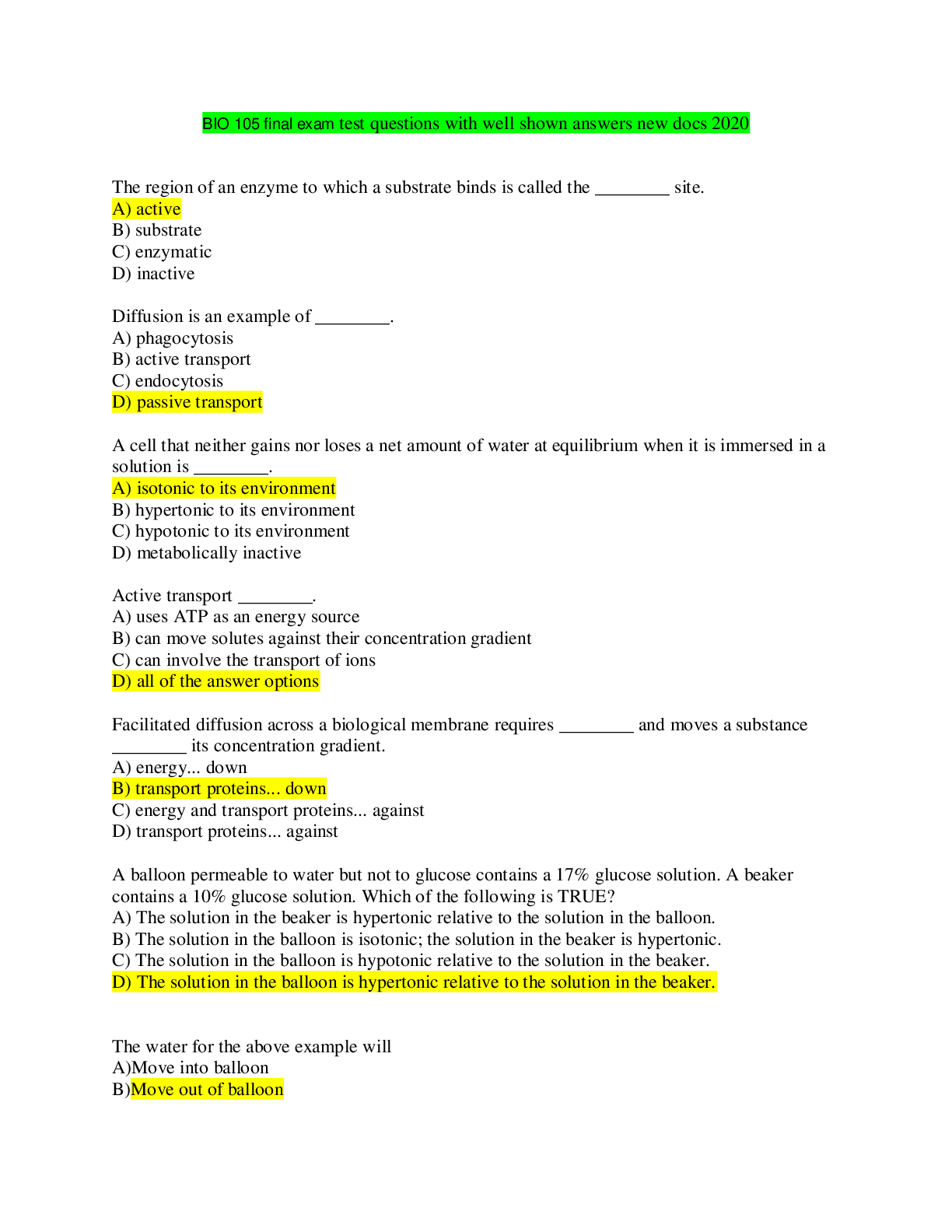Pathophysiology > QUESTIONS & ANSWERS > NURS 611 TEST 1 PATHO_ TEST QUESTIONS WITH ANSWERS (MARYVILLE UNIVERSITY) (All)
NURS 611 TEST 1 PATHO_ TEST QUESTIONS WITH ANSWERS (MARYVILLE UNIVERSITY)
Document Content and Description Below
TEST QUESTIONS WITH ANSWERS! NURS 611 PATHOPYSIOLOGY TEST 1 PATHO Apoptosis- A programmed death Example: Inflammatory process Necrosis-Irreversible injury Examples: Mr. Bax r/t arteriosclerosis *... Hypoxia #1 cellular injury (MI) and the most common cause of cellular injury is hypoxic injury Atrophy: Physiologic: thymus gland atrophy (childhood) Hypertrophy: (increase in size of cell) Another cellular adaptation that can actually be beneficial is hypertrophy of myocardial cells such as in endurance training – this is referred to as physiologic hypertrophy. Versus Pathologic hypertrophy that occurs secondary to HTN. Hyperplasia: (increase in # of cells) Compensatory: removal of 70% of liver – can regenerate in about 2 weeks. Pathological: endometrial hyperplasia Hyperplasia is cellular adaptation would take place after a portion of the liver has been dissected. Metaplasia: (replacement of cells) normal columnar ciliated epithelial cells of the bronchial lining have been replaced by stratified squamous epithelial cells. Can be reversed if irritant stopped. Dysplasia – not adaptive ATP=energy BUT needs Oxygen – aerobic metabolism A reduction in ATP levels causes the plasma membrane’s sodium-potassium (Na+, K+) pump and sodium- calcium exchange to fail, which leads to an intracellular accumulation of sodium and calcium and diffusion of potassium out of the cell. Sodium and water then can enter the cell freely, and cellular swelling results. What happens when oxygen reserves are depleted? Anaerobic metabolism (glycolysis) A free radical is an electrically uncharged atom or group of atoms having an unpaired electron. Having one unpaired electron makes the molecule unstable; thus to stabilize, it gives up an electron to another molecule or steals one. Injurious chemical bond formation with proteins, lipids, carbohydrates—key molecules in membranes and nucleic acids. Cardiovascular, HTN, IHD, HF, DM *The consequence of leakage of lysosomal enzymes during chemical injury enzymatic digestion of the nucleus and nucleolus occurs halting DNA synthesis. Lysosomes: Enzymatic digestion of cellular organelles, including the nucleus and nucleolus, ensues, halting synthesis of DNA and ribonucleic acid (RNA). Ethanol: Liver enzymes metabolize ethanol to acetaldehyde which causes hepatic cellular dysfunction. Peroxisomes helps detoxify ethanol – if not functioning properly the ethanol is turned to Fat in the liver (Thus the term Fatty Liver) Radiation: Which cell component is the most vulnerable target of radiation? Deoxyribonucleic acid (DNA) Muscular atrophy (Sarcopenia)- “Stiffness” or “rigidity” of systems: Peripheral vascular resistance increases. Decreased production of HCL and delayed emptying of stomach. Decreased immune response F & E: Total body potassium concentration also decreases because of decreased cellular mass. An increased sodium/potassium ratio suggests that the decreased cellular mass is accompanied by an increased extracellular compartment. Fluid Deficits and Dehydration Marked water deficit is manifested by S & S of dehydration (decreased perfusion): headache, Thirst (Osmoreceptors are activated by an increase in osmotic pressure of the plasma), dry skin and mucous membranes, weight loss, decreased or concentrated urine, Skin turgor may be normal or decreased, tachycardia, weak pulses (compensatory), postural hypotension, may be present. **Vulnerable populations to FVD: Infants: 75-80% TBW (baby Thompson – diarrhea – increased extracellular fluid Obese: fat is water repelling Older: thirst sensation is diminished Hydrostatic vs Oncotic Pressures At the arterial end of capillaries, fluid moves from the intravascular space into the interstitial space because the capillary hydrostatic pressure (influenced by the Cardiac system) is higher than the capillary oncotic pressure. Oncotic pressure is heavily influenced by plasma proteins. Low plasma albumin causes edema as a result of a reduction in plasma oncotic pressure *Remember the movement of fluid across the arterial end of capillary membranes into the interstitial fluid surrounding the capillary is hydrostatic pressure [Show More]
Last updated: 1 year ago
Preview 1 out of 13 pages
Instant download
.png)
Buy this document to get the full access instantly
Instant Download Access after purchase
Add to cartInstant download
Reviews( 0 )
Document information
Connected school, study & course
About the document
Uploaded On
Jun 07, 2021
Number of pages
13
Written in
Additional information
This document has been written for:
Uploaded
Jun 07, 2021
Downloads
0
Views
40

 AANP-FNP LIGHTNING ROUND REVIEW-2.png)
 MACROECONOMICS QUESTIONS AND ANSWERS.png)


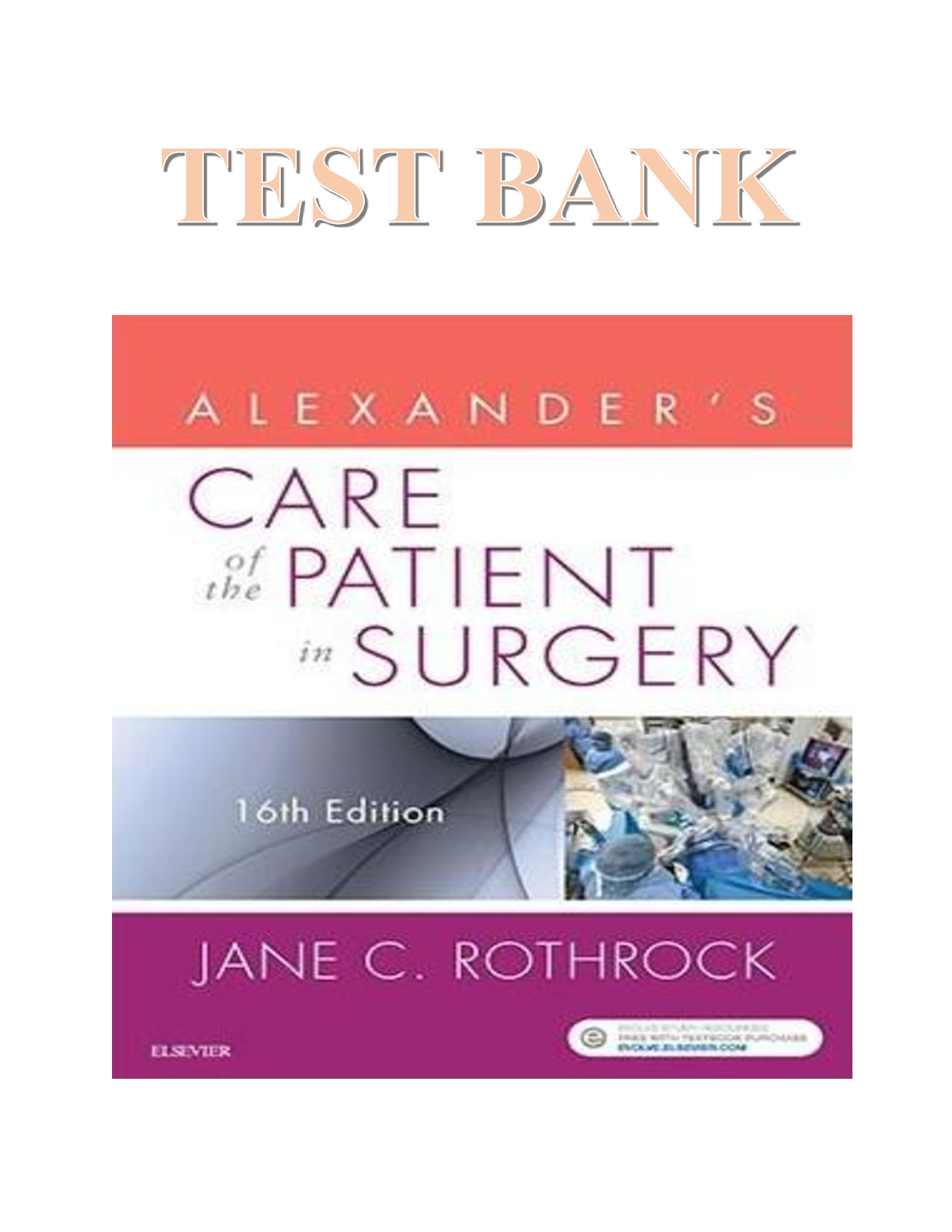

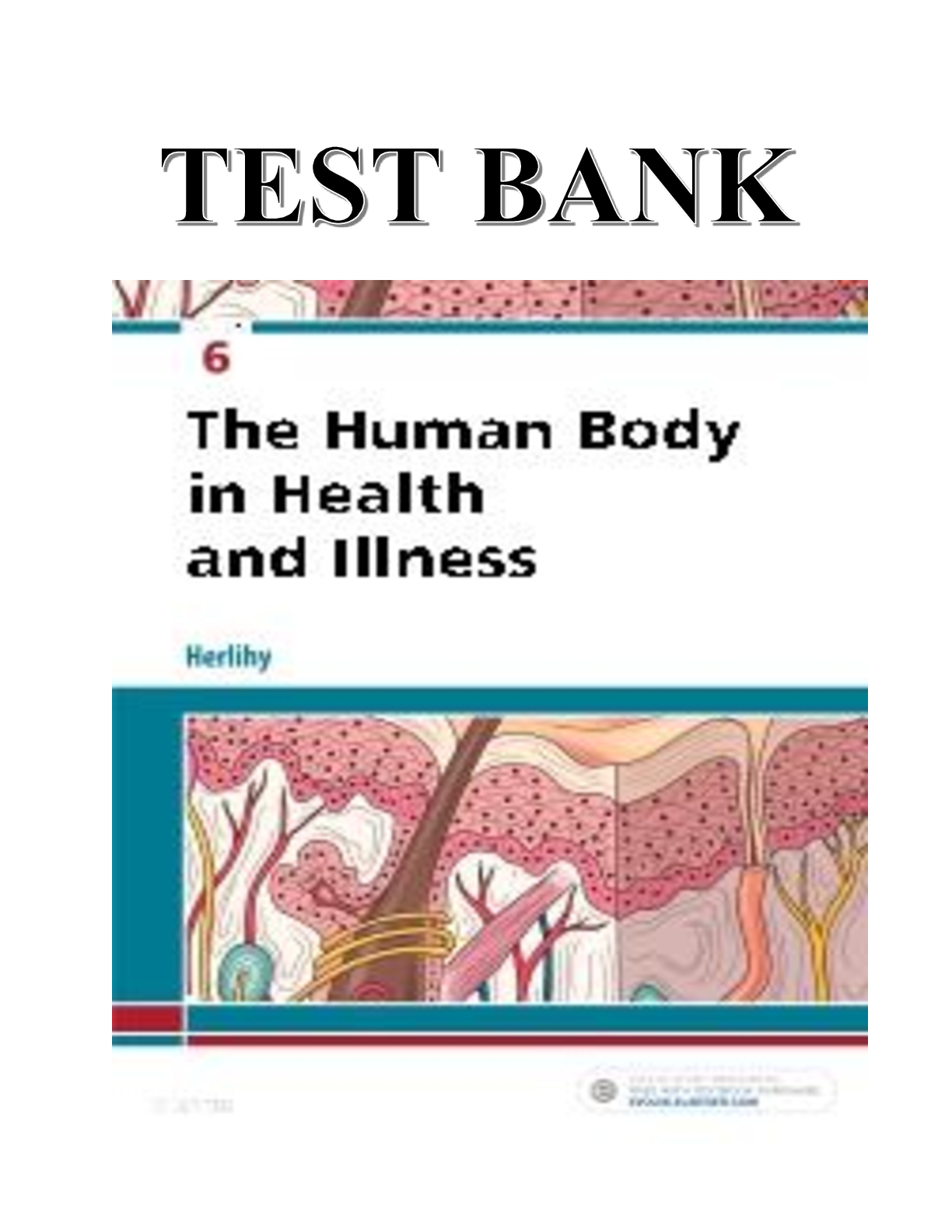
 W2 SH [TRANSCRIPT] – ASTHMA - RESPIRATORY COMPLETED SHADOW HEALTH.png)



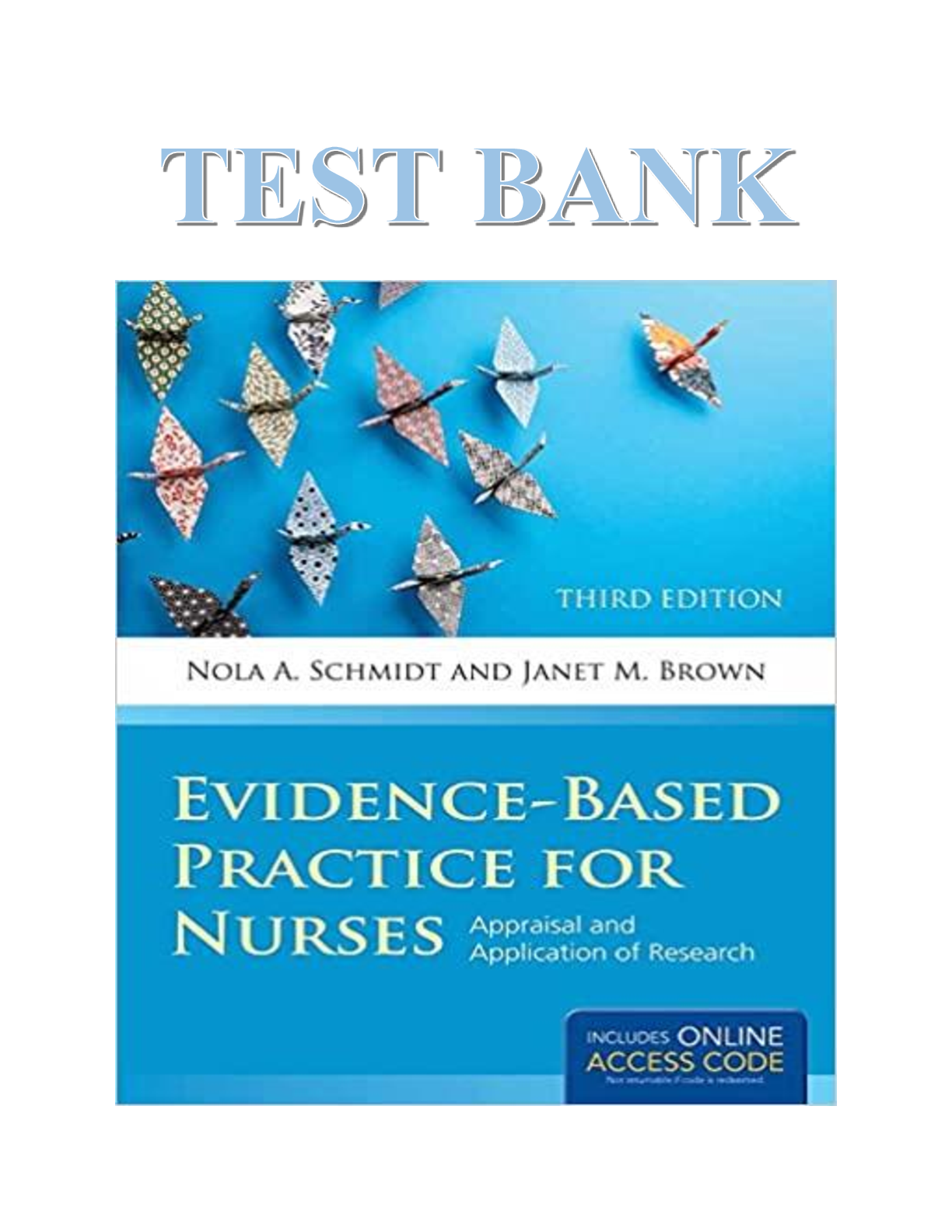
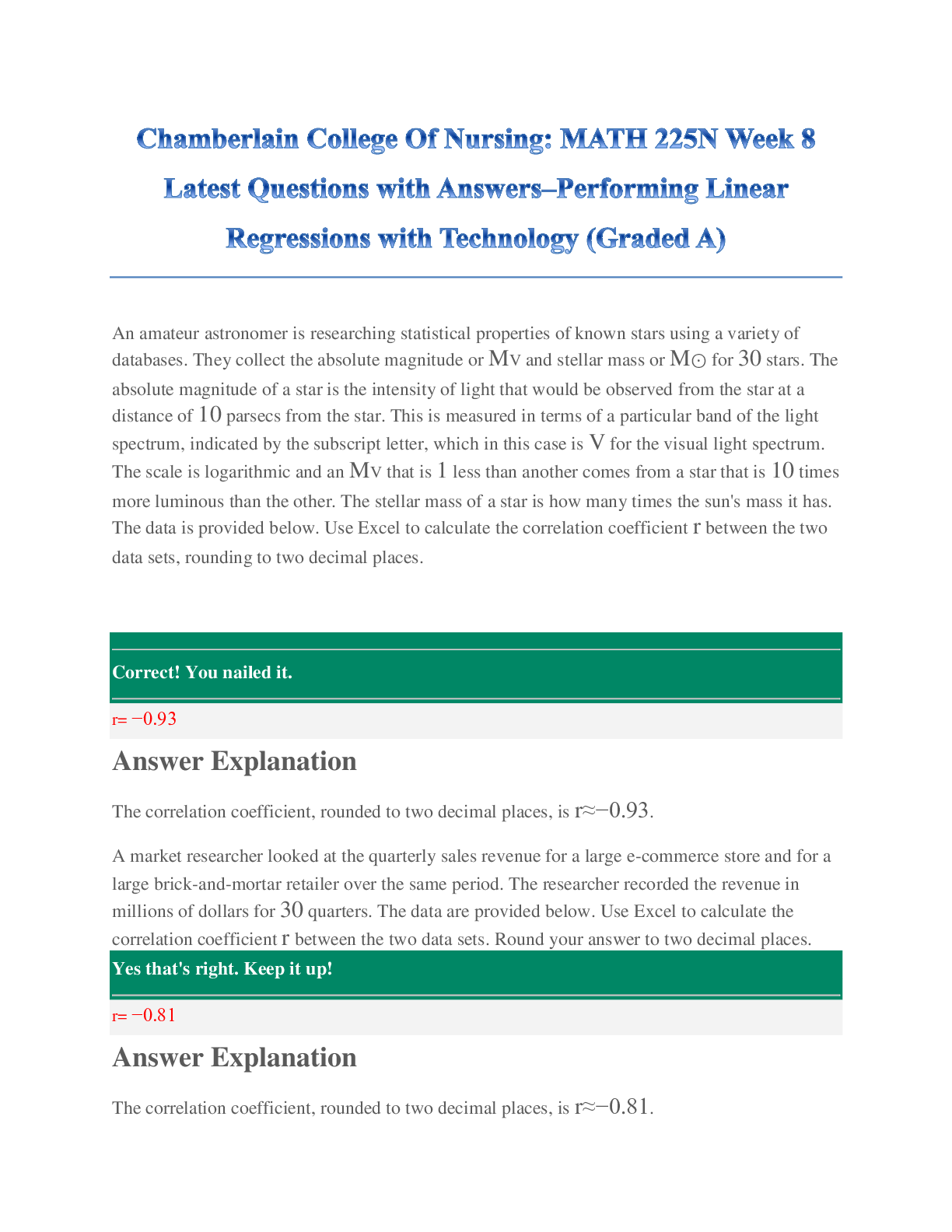



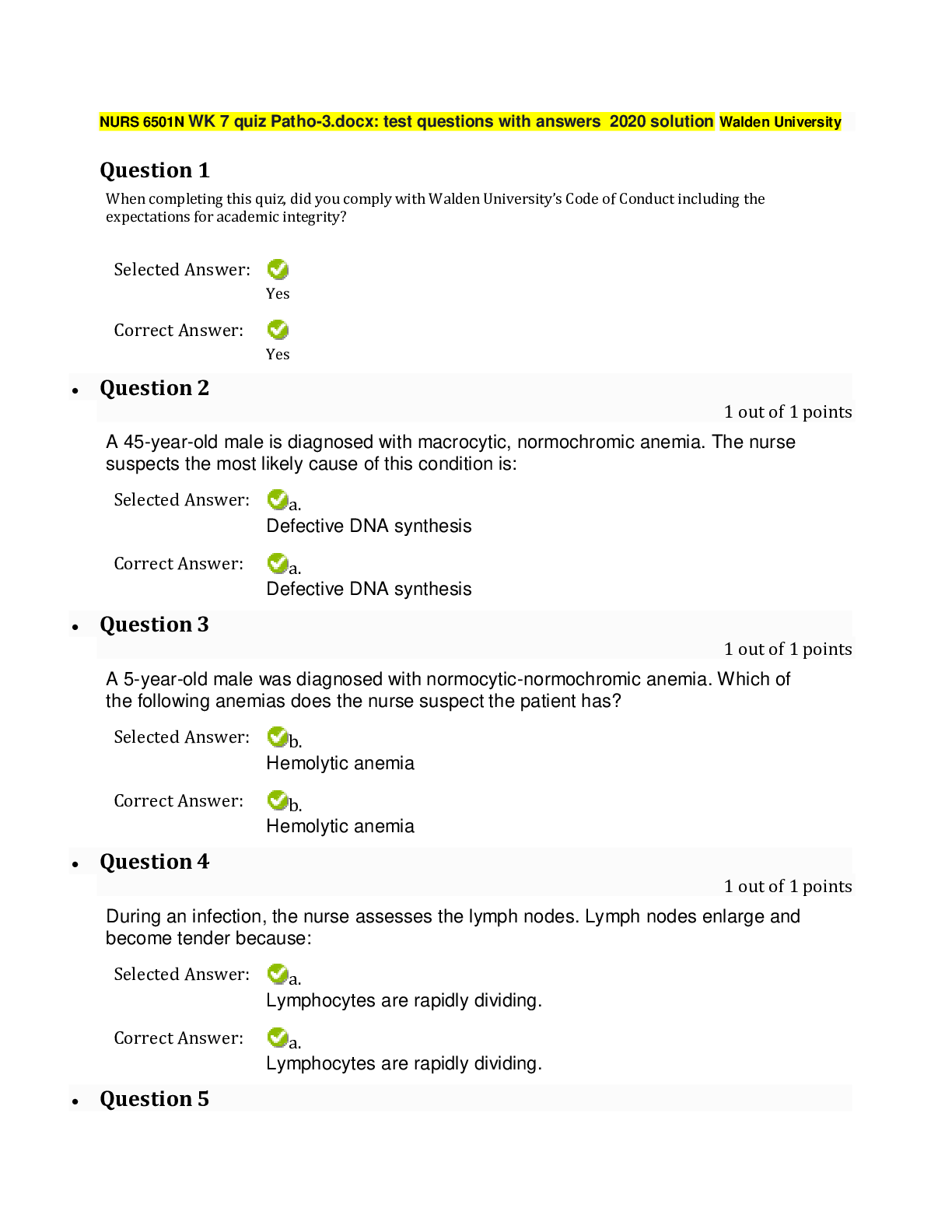

.png)

.png)
.png)
